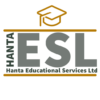Course Description
The Flipped Classroom model was first developed by Jonathan Bergmann and Aaron Sams, high school chemistry teachers in the USA. The key features of a Flipped Classroom are that students learn content online outside of class and then apply what they have learned in class through interactive activities with the teacher.
There are many benefits to the Blended Learning - Flipped Classroom model for both students and teachers. Students can watch lectures, complete assignments and receive feedback at their own pace. This can be beneficial for those who want to spend more time on certain concepts or who need extra time to complete assignments. The Flipped Classroom model also aids students who have different learning styles, especially those who learn best by listening to lectures, watching videos, or reading texts.
The four pillars of the Flipped Classroom model are:
- Flexible environment
- Learning culture
- Intentional content
- Professional education
This course will aid teachers in learning the 6-steps to flipping your classroom, from planning, recording, sharing and changing to group and regrouping.
The schedule also includes cultural activities that will allow participants to explore and experience Irish culture and the vibrant city of Dublin.
Course Content
- Differences between traditional teaching and flipped classroom modelling
- Key issues and concerns in flipping classrooms
- Creating a lesson plans
- Creating media lectures
- Understanding the virtual learning environment
- Effective teaching strategies for flipping the classroom
- Use technology (webtools) to create media for the flipped lesson
- Technological resources available to the students
- Flipped classroom best practices
Learning Outcomes
At the end of the course delegates will be able to:
- Get a well-rounded understanding of the Flipped Classroom concept and how to carry out its procedures in the classroom
- Produce lectures with aplomb via various digital media methods
- Lead students on a one-on-one and group basis in the classroom
- Comprehend how to evaluate a Flipped Classroom project and make a lesson plan
- Put together ways in which the Flipped Classroom approach can be executed cross-curricular or school-wide
Assessment and Certificates
Assessment of performance will be through delegate-completed portfolio of work. The final course certification for successful completion is a college-issued “Course Certificate of Completion”, for each module studied. In addition, where applicable, delegates will receive relevant EuroPass certificates.
![]()

